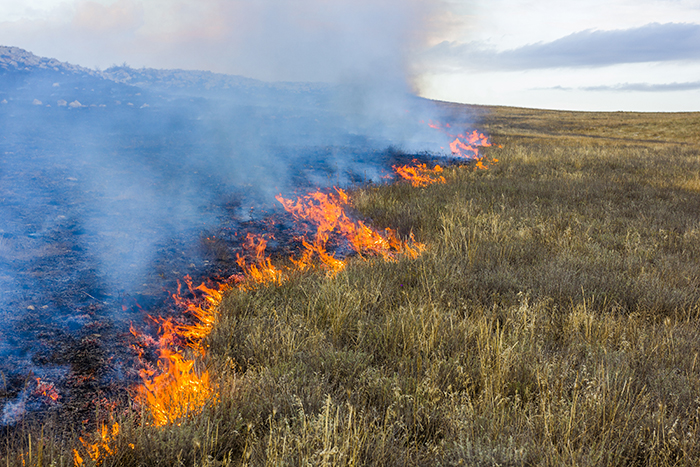
Wildfire-inducing weather conditions across the Central Plains have recently set thousands of pasture and rangeland acres ablaze. In addition to the Smokehouse Creek Fire that has become the largest in Texas state history, farmland across Nebraska, Kansas, and Oklahoma has also gone up in flames.
According to an article from Kansas State University Extension, short-term weather patterns have a greater influence on fire potential than long-term drought conditions. Therefore, the warm, dry air hovering over the Central Plains combined with excessively high winds created ideal conditions for recent disasters. To make matters worse, ample rainfall during the previous growing season encouraged tall grass growth that has been fueling the fires.
Overcoming wildfire damage can demand drastic changes to livestock management, especially when forage supplies are significantly reduced or entirely depleted. Therefore, Dana Zook and David Lalman with Oklahoma State University Extension provide the following limit feeding strategies to maximize forage resources while mitigating stress and weight loss in animals.
A short-term solution
If no forage is available after a fire event, the extension specialists recommend initially using a commercial feed product — such as calf creep feed or a growing ration — to maintain animals’ body weight. One advantage of these products is that they are typically bagged and ready to be shipped immediately.
Feed cattle a product that is 12% to 14% protein and 8% to 12% fiber at a daily rate of about 0.6% body weight. The specialists note this feeding rate is equivalent to 8 pounds of feed per day for a cow that is approximately 1,200 pounds.
“The low feeding rate is intentional because a sudden switch from free-choice forage to a grain or concentrate diet can result in digestive upset and founder,” they explain. “The risk is increased tremendously if the concentrate is overfed to animals that are not adapted.”
With that said, it is not advised to solely feed cattle commercial products for more than four to five days. Weight loss is more likely to occur after that point due to a limited feeding rate, and mineral composition will become unbalanced if animals consume only concentrated feeds. The specialists add that a lack of roughage in the diet will eventually compromise rumen health.
Slowly add hay
Once limited hay is available, feed animals about 0.5% body weight of forage per day with about 1% body weight of concentrated feed. Slowly incorporating hay in the diet will restore rumen health without draining feed supplies before spring forage is available following a fire.
“If hay is more abundant, 15 pounds of grass hay fed with 5 pounds of a 28% to 32% range cube can maintain a 1,200-pound cow in the last trimester of pregnancy,” the specialists assert. “The hay should be rolled out to ensure each animal has an equal opportunity to consume their share of the limited resource.”
Make sure cattle always have access to clean water. Moreover, consider feeding a supplement that is high in calcium to help balance animals’ mineral intake when utilizing concentrated feeds that are high in phosphorus. Grazing wheat pastures that have not been burned can also boost calcium consumption. In this case, the specialists advise including more salt and vitamin A in animal diets.

